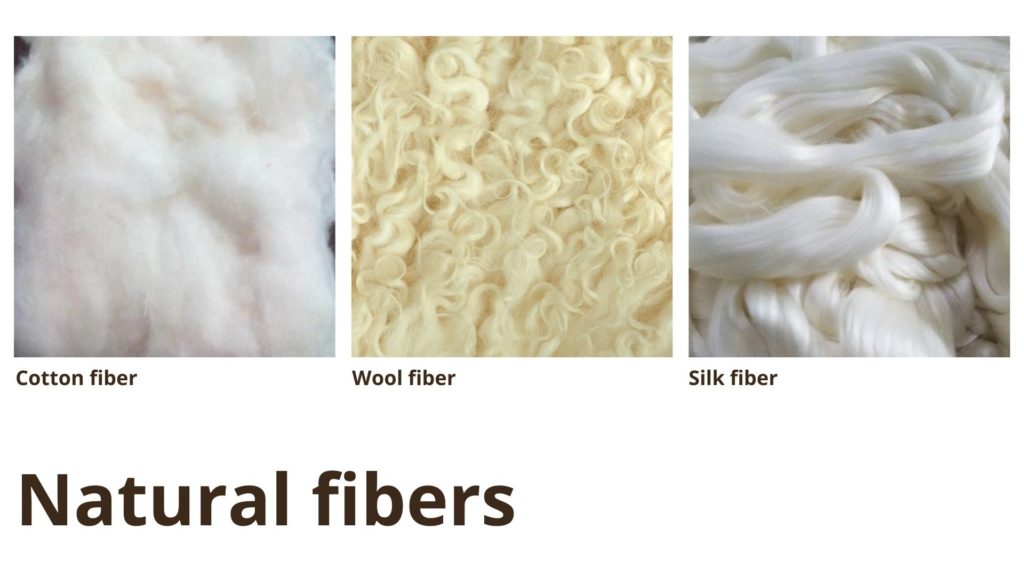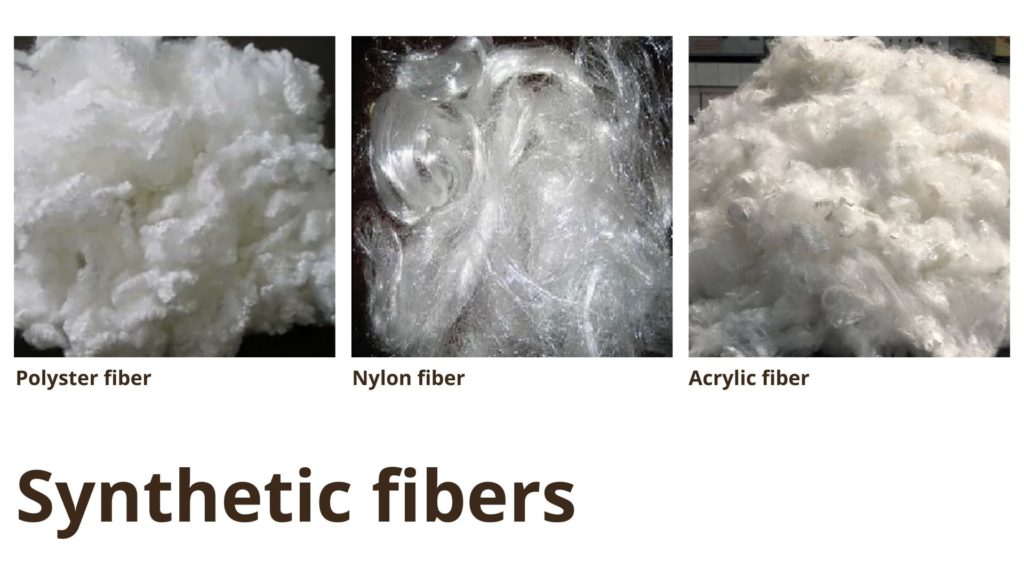In the ever-evolving world of textiles, understanding the properties of natural and synthetic fabrics is crucial for designers, manufacturers, and consumers alike. This blog explores the distinctive characteristics, advantages, and disadvantages of these fabric types.
Natural Fibers: The Touch of Nature
Natural fibers are derived from organic sources like plants and animals. They are renowned for their comfort, environmental friendliness, and have been a mainstay in human clothing for millennia.

Detailed Aspects of Natural Fibers:
- Cotton (Plant Fiber): Widely used due to its comfort, breathability, and versatility. Ideal for all-season wear, cotton is hypoallergenic, making it suitable for sensitive skin. It’s extensively used in beddings, casual wear, and medical textiles.
- Properties: Highly breathable, absorbent, and soft.
- Uses: Ideal for everyday wear, from casual clothing to bed linens.
- Challenges: Susceptible to shrinkage and wrinkles; requires more water and pesticides for cultivation.
Dive deeper into cotton’s versatility in “The Versatile World of Cotton: Unveiling Its Multifaceted Uses”.
2. Wool (Animal Fiber): Prized for its insulation properties, wool is a top choice for winter clothing. Its natural crimp creates tiny air pockets, trapping heat effectively. Wool is also naturally fire-resistant and durable.
- Properties: Excellent insulator, naturally water-resistant, and durable.
- Uses: Perfect for cold-weather clothing like sweaters and coats.
- Challenges: Can be itchy or shrink if not properly cared for.
Explore more about wool in “Exploring the World of Fabric Fibers: A Guide to Understanding Different Types of Fibers”.
3. Silk (Animal Fiber): Known for its luxurious feel, silk is strong, hypoallergenic, and has a natural sheen. It’s a popular choice for high-end garments and bedding due to its smooth texture and moisture-absorbing properties.
- Properties: Luxuriously smooth, strong, and has a natural sheen.
- Uses: High-end apparel, lingerie, and luxurious beddings.
- Challenges: Delicate, requires special care, and is typically more expensive.
Learn about silk and other fibers in the comprehensive guide on fabric fibers.
Synthetic Fibers: The Marvels of Human Ingenuity
Synthetic fibers are human-made, often from petrochemicals. They are known for their strength, versatility, and cost-effectiveness.

Detailed Insights into Synthetic Fibers:
- Polyester: Resistant to shrinking and wrinkling, polyester is widely used in sportswear and outdoor gear. It’s lauded for its durability and ease of care.
- Properties: Wrinkle-resistant, strong, and dries quickly.
- Uses: Used in everything from sportswear to home furnishings.
- Challenges: Less breathable, can retain odors, and is non-biodegradable.
Understand more about synthetic fibers in “Understanding Synthetic Fibers: Types, Characteristics, and Applications”.
2. Nylon: The first fully synthetic fiber, nylon is exceptionally strong and elastic, making it ideal for hosiery, swimwear, and athletic wear.
- Properties: Exceptionally strong, elastic, and mildew resistant.
- Uses: Common in activewear, swimwear, and outdoor gear.
- Challenges: Prone to heat damage and environmental concerns due to its non-biodegradable nature.
Gain further insights on nylon and other synthetics in the above-mentioned synthetic fibers guide.
3. Acrylic: Often used as a cheaper alternative to wool, acrylic is lightweight and warm, suitable for sweaters and winter accessories.
- Properties: Lightweight, soft, and can mimic wool and cotton.
- Uses: Often used in knitwear, fleece, and home textiles.
- Challenges: Can pill easily and is less breathable.
For more on synthetic fibers, refer to the guide on understanding synthetic fibers.
Comparative Overview
Comfort and Breathability:
- Natural Fibers: Typically more comfortable and breathable, ideal for sensitive skin.
- Synthetic Fibers: Less breathable, can cause discomfort in warm conditions.
Durability and Maintenance:
- Natural Fibers: Generally require more care, may not be as long-lasting as synthetics.
- Synthetic Fibers: Highly durable, easier to maintain, and often wrinkle-resistant.
Environmental Impact:
- Natural Fibers: More sustainable and biodegradable, but agricultural practices for fibers like cotton can be resource-intensive.
- Synthetic Fibers: Raise environmental concerns due to their petroleum-based origin and non-biodegradability.
Cost:
- Natural Fibers: Tend to be more expensive due to the growing and harvesting processes.
- Synthetic Fibers: More cost-effective due to easier and scalable manufacturing processes.
In summary, choosing between natural and synthetic fibers depends on priorities like comfort, durability, cost, and environmental impact. Natural fibers (cotton, wool, silk) are breathable and comfortable but more costly and care-intensive. Synthetic fibers (polyester, nylon, acrylic) are durable, easy to maintain, and cheaper but less breathable and eco-friendly. Advances in textile technology are blending these fibers’ benefits, offering more versatile fabric choices.
